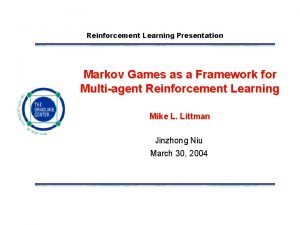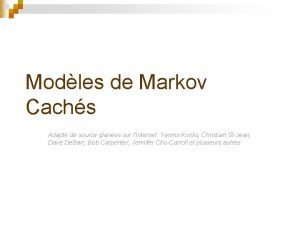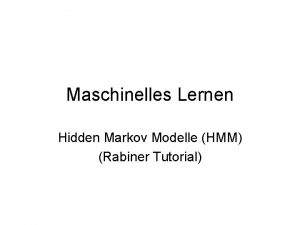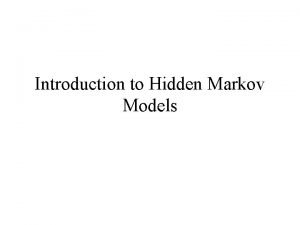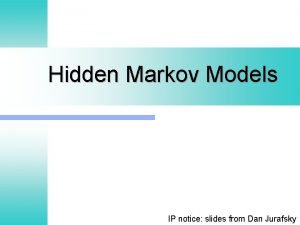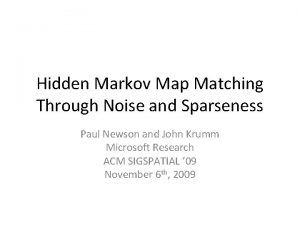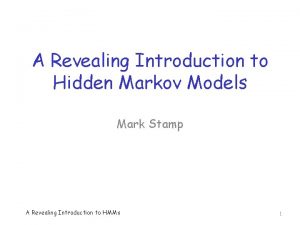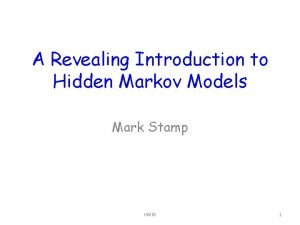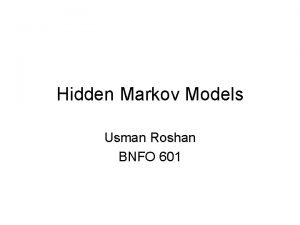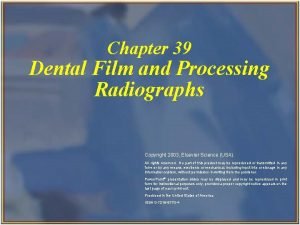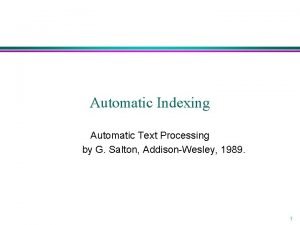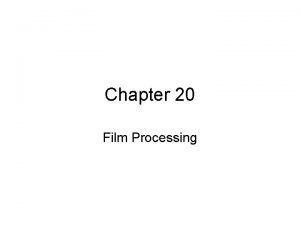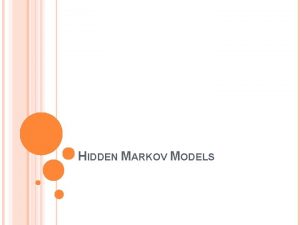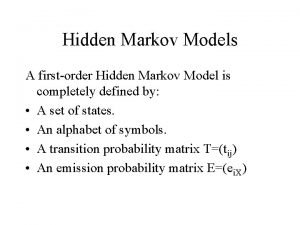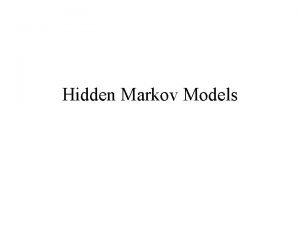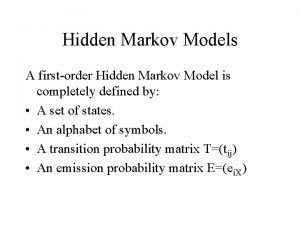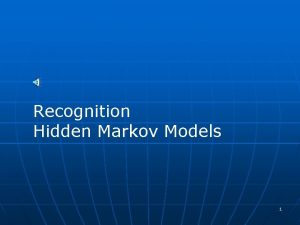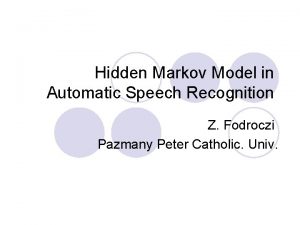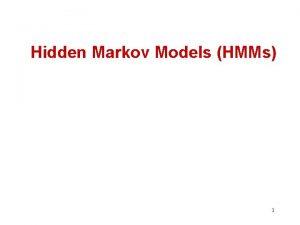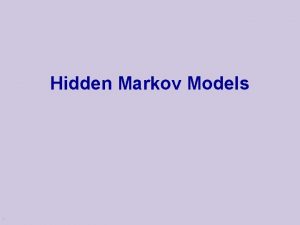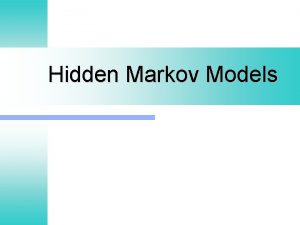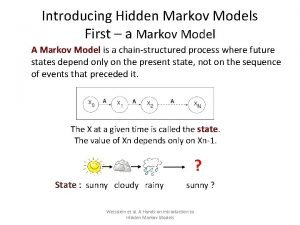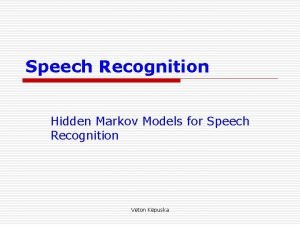EEL 6586 AUTOMATIC SPEECH PROCESSING Hidden Markov Model















- Slides: 15

EEL 6586: AUTOMATIC SPEECH PROCESSING Hidden Markov Model Lecture Mark D. Skowronski Computational Neuro-Engineering Lab University of Florida March 31, 2003

Questions to be Answered • What is a Hidden Markov Model? • How do HMMs work? • How are HMMs applied to automatic speech recognition? • What are the strengths/weaknesses of HMMs?

What is an HMM? A Hidden Markov Model is a piecewise stationary model of a nonstationary signal. Model parameters: • states -- represents domain of a stationary signal • interstate connections -- defines model architecture • pdf estimates (for each state) § Discrete -- codebooks § Continuous -- mean, covariance matrices

HMM Depiction

PDF Estimation • Discrete – Codebook of feature space cluster centers – Probability for each codebook entry • Continuous – Gaussian mixtures (mean, covariance, mixture weights) – Discriminative estimates (neural networks)

How do HMMs Work? • Three fundamental issues – Training: Baum-Welch algorithm – Scoring (evaluation): Forward algorithm – Optimal path: Viterbi algorithm Complete implementation details: “A Tutorial on Hidden Markov Models and Selected Applications in Speech Recognition”, L. R. Rabiner, IEEE Proceedings, Feb 1989

HMM Training • Baum-Welch algorithm – Iterative procedure (on-line or batch mode) – Guaranteed to increase model accuracy after each iteration – Estimation may be model-based (ML) or discriminative (MMI)

HMM Evaluation • Forward algorithm – Calculates P(O|λ) for ALL valid state sequences – Complexity: • order N 2 T, ~5000 computations • order 2 T • NT (brute force), ~6 E 86 computations • N states, T speech frames

Optimal Path • Viterbi algorithm – Determines the single most-likely state sequence for a given model and observation sequence – Dynamic programming solution – Likelihood of Viterbi path can be used for evaluation instead of Forward algorithm

HMMs in ASR Piecewise stationary model of nonstationary signal Type Word # Models <1000 Phoneme 40 Biphone 1400 Triphone 40 K + Coarticulation Scaling pdf estimation Coarticulation TRADEOFF Coarticulation pdf estimation

Typical Implementations • Word models: – 39 dimension feature vectors – 3 -15 states – 1 -50 Gaussian mixtures – Diagonal covariance matrices – First-order HMM – Single-step state transitions – Viterbi used for evaluation (speed)

Typical Implementations • Triphones – Left- and right-context phoneme – 3 -5 states – Up to 50 mixtures/state – 40 K models – 39 dimension full covariance matrices – Approx 15 billion parameters to estimate – Approx 43, 000 hours speech for training

Implementation Issues • Same number of states for each word model? • Underflow of evaluation probabilities? • Full/Diagonal covariance matrices?

HMM Limitations • Piecewise stationary assumption – Dipthongs – Tonal languages – Phonetic information in transitions • iid assumption – Slow articulators • Temporal information – No modeling beyond 100 ms time frame • Data intensive

Download Slides www. cnel. ufl. edu/~markskow/papers/hmm. ppt
 Hidden markov model rock paper scissors
Hidden markov model rock paper scissors Hidden markov model tutorial
Hidden markov model tutorial Hidden markov model beispiel
Hidden markov model beispiel Hidden markov model
Hidden markov model Veton kepuska
Veton kepuska Hidden markov chain
Hidden markov chain Hidden markov chain
Hidden markov chain Hidden markov map matching through noise and sparseness
Hidden markov map matching through noise and sparseness A revealing introduction to hidden markov models
A revealing introduction to hidden markov models A revealing introduction to hidden markov models
A revealing introduction to hidden markov models Hidden markov models
Hidden markov models Markov chain natural language processing
Markov chain natural language processing Machine that automates all film-processing stops
Machine that automates all film-processing stops Automatic text processing
Automatic text processing Automatic processing psychology definition
Automatic processing psychology definition Automatic processing film
Automatic processing film
